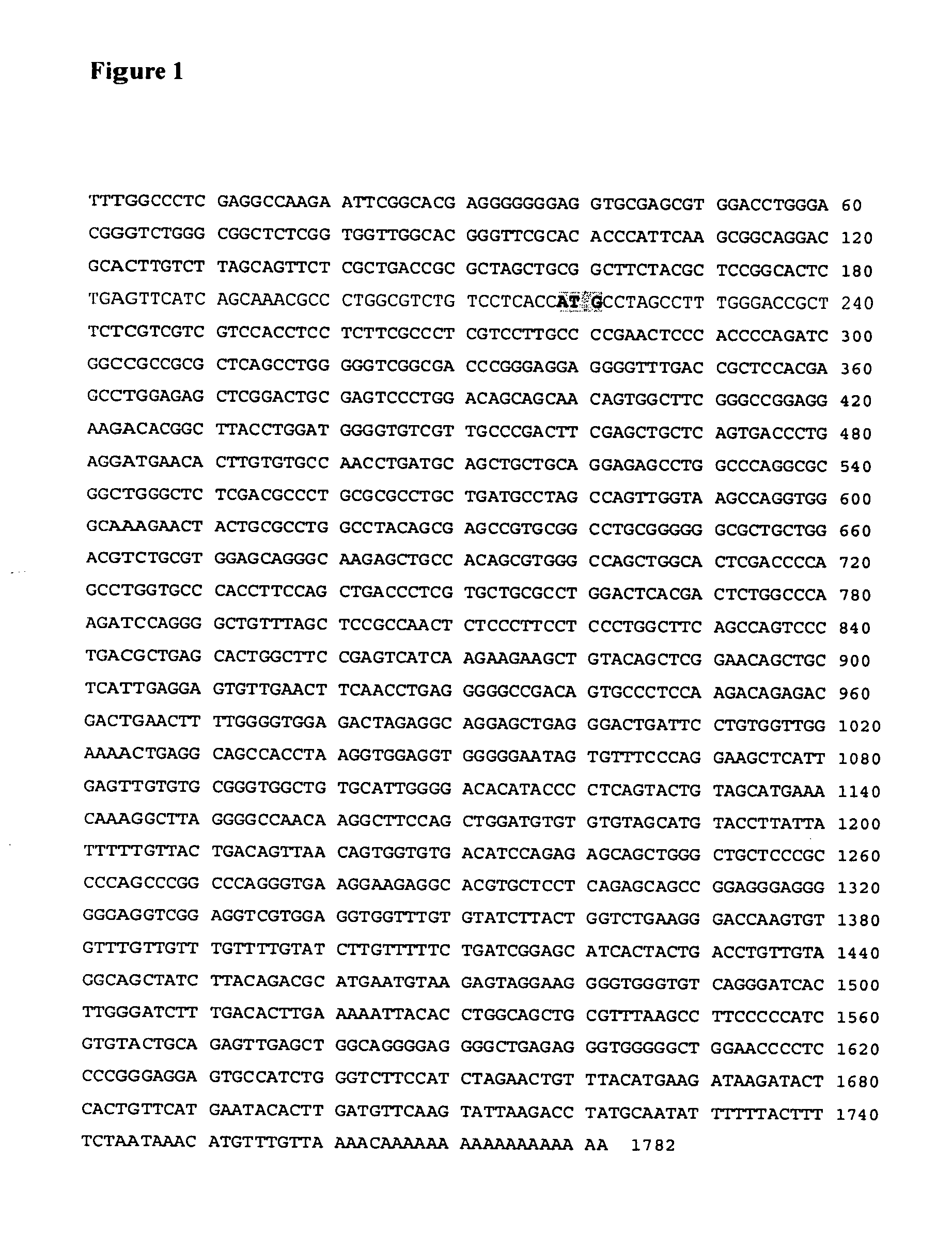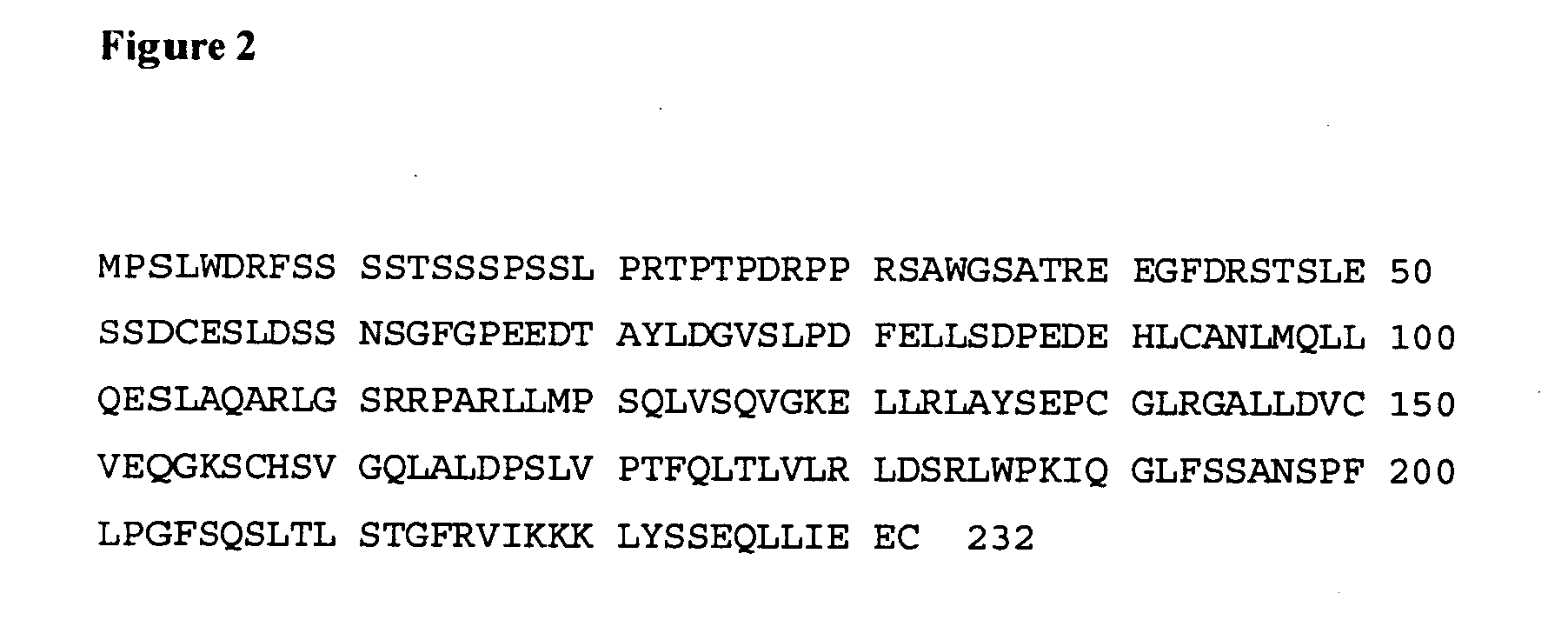Screening systems utilizing RTP801
a screening system and rtp801 technology, applied in the direction of instruments, peptides/protein ingredients, peptides, etc., can solve the problem of abnormal accumulation of hypoxia-inducible factors (hif), and achieve the effect of enhancing the activity of rtp801
- Summary
- Abstract
- Description
- Claims
- Application Information
AI Technical Summary
Benefits of technology
Problems solved by technology
Method used
Image
Examples
example 1
General Materials and Methods
[0320] If not indicated to the contrary, the following materials and methods were used in Examples 1-5:
Cell Culture
[0321] The first human cell line, namely HeLa cells (American Type Culture Collection) were cultured as follows: Hela cells (American Type Culture Collection) were cultured as described in Czauderna F et al. (Czauderna, F., Fechtner, M., Aygun, H., Arnold, W., Klippel, A., Giese, K. & Kaufinann, J. (2003). Nucleic Acids Res, 31, 670-82).
[0322] The second human cell line was a human keratinozyte cell line which was cultivated as follows: Human keratinocytes were cultured at 37° C. in Dulbecco's modified Eagle medium (DMEM) containing 10% FCS.
[0323] The mouse cell line was B16V (American Type Culture Collection) cultured at 37° C. in Dulbecco's modified Eagle medium (DMEM) containing 10% FCS. Culture conditions were as described in Methods Find Exp Clin Pharmacol. 1997 May; 19(4):231-9:
[0324] In each case, the cells were subject to the...
example 2
Experimental Models and Methods
[0327] In-vivo and in-vitro models which are useful in the identification of compounds which modulate RTP801 and animal models which can be used for validation of the activity of said identified compounds and their therapeutic potential are disclosed in PCT Publication No.WO06 / 023544A2 and PCT application No. PCT / US2007 / 01468, assigned to assignee of the instant application.
example 3
Experimental Methods Used to Identify Tight-junction Proteins
Permeability Experiments
[0328] EOMA cells stably infected with Lentivirus encoding shRNA 14 (aka REDD14, which decreases levels of the RTP801 polypeptide) and Lentivirus controls (empty vector; Luciferase shRNA encoding vector and “Yeast” siRNA encoding vector) were used in the experiment. Permeability was measured using the kit “In vitro Vascular Permeability Assay Kit” ECM640, Chemicon. Cells were grown in an collagen-coated inserts, seeding density- 100.000 / insert. Growth—4 days, in DMEM medium with 10% FCS.
[0329] H2O2 (1-2mM) was added after 4 d of growth for 2 h. Then medium was replaced with fresh medium containing FITC-dextran. Incubation was continued for 10-40 min and aliquots were taken for fluorescence measurements (485-530 nM)
Western Blotting
[0330] Cells were grown in 6 well plates in similar conditions as above (+ / − H202), and were lysed in RIPA buffer containing protease inhibitor cocktail and phospha...
PUM
| Property | Measurement | Unit |
|---|---|---|
| Biological properties | aaaaa | aaaaa |
Abstract
Description
Claims
Application Information
 Login to View More
Login to View More - R&D
- Intellectual Property
- Life Sciences
- Materials
- Tech Scout
- Unparalleled Data Quality
- Higher Quality Content
- 60% Fewer Hallucinations
Browse by: Latest US Patents, China's latest patents, Technical Efficacy Thesaurus, Application Domain, Technology Topic, Popular Technical Reports.
© 2025 PatSnap. All rights reserved.Legal|Privacy policy|Modern Slavery Act Transparency Statement|Sitemap|About US| Contact US: help@patsnap.com



